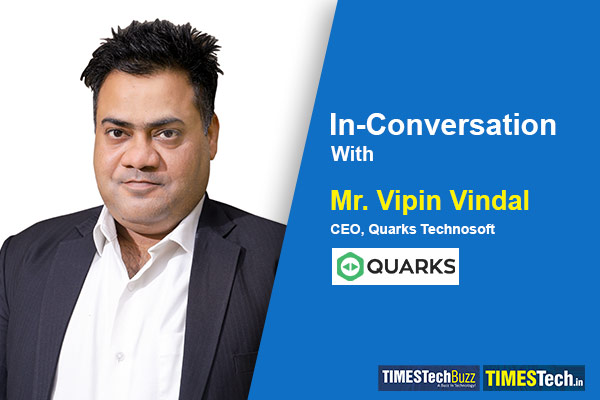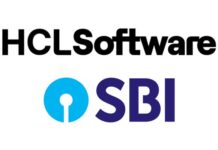In a groundbreaking interview with TimesTech, Mr. Vipin Vindal, CEO of Quarks Technosoft, sheds light on the transformative synergy between green cloud technology and business tech. As environmental sustainability takes center stage, Vindal delves into innovations driving the reduction of carbon footprints in digital operations. From renewable energy integration to AI-driven resource optimization, he unveils strategies to overcome challenges and highlights the economic benefits that businesses can reap through eco-friendly practices.
TimesTech: How is the combination of green cloud technology and business tech fostering environmental sustainability, and what specific innovations are leading the way in reducing the carbon footprint of digital operations?
Mr. Vipin: Renewable Energy Integration: Cloud providers are investing in renewable energy sources to power their data centers. This not only reduces the carbon footprint but also contributes to the global shift towards cleaner energy. Companies are increasingly entering power purchase agreements (PPAs) for a stable supply of renewable energy.
Energy-Efficient Hardware: Advances in hardware design focus on creating energy-efficient servers, storage devices, and networking equipment. For example, the development of low-power processors and the use of solid-state drives (SSDs) in storage systems contribute to reduced energy consumption.
Optimized Workloads: Cloud service providers are leveraging machine learning algorithms to analyze and optimize workloads. This ensures that resources are allocated efficiently, preventing over-provisioning and unnecessary energy consumption. Dynamic resource allocation and load balancing also enhance performance.
TimesTech: What common challenges do businesses encounter when adopting green cloud technology, and can you share insights on successful strategies or best practices that help overcome these challenges?
Mr. Vipin: Initial Investment Costs: While adopting green cloud technology may involve higher upfront costs, businesses can overcome this challenge by planning for long-term benefits. Governments and environmental agencies often provide incentives and grants for businesses adopting eco-friendly practices, offering financial support.
Legacy Infrastructure: Transitioning from traditional IT infrastructure to green cloud solutions can be complex. Businesses are advised to adopt a phased approach, migrating workloads gradually. Training programs for staff and the use of hybrid cloud solutions during the transition can help mitigate disruptions.
TimesTech: How do green cloud technologies align with economic interests for businesses, and what evidence or examples showcase the financial benefits and return on investment (ROI) associated with eco-friendly technology practices?
Mr. Vipin: Cost Reduction: Beyond reducing energy consumption, green cloud technologies contribute to cost reduction through improved resource utilization and operational efficiency. Virtualization, containerization, and automation play key roles in streamlining processes and minimizing waste.
Brand Reputation: Embracing green cloud technology aligns with the growing importance of corporate social responsibility. Companies that prioritize environmental sustainability often experience positive impacts on their brand reputation, attracting environmentally conscious consumers and socially responsible investors.
TimesTech: What are the latest technological innovations shaping green cloud technology, particularly in data center design and operation? How are these innovations contributing to energy efficiency and environmental sustainability?
Mr. Vipin: Liquid Cooling Systems: Traditional air cooling in data centers is being supplemented or replaced by liquid cooling systems. These systems are more efficient in dissipating heat, allowing for higher density computing and reducing overall energy consumption.
AI-Driven Resource Optimization: Artificial intelligence and machine learning algorithms are applied to analyze historical data, predict workloads, and optimize resource allocation in real-time. This not only improves efficiency but also contributes to predictive maintenance, reducing downtime.
TimesTech: Looking ahead, what trends do you anticipate in the integration of green cloud technology and business tech? How might regulatory changes, industry standards, and emerging technologies influence the evolution of environmentally sustainable digital practices?
Mr. Vipin: Regulatory Changes: Governments worldwide are recognizing the environmental impact of data centers and are likely to introduce more stringent regulations. This will push businesses to adopt green cloud technologies and adhere to environmentally friendly practices.
Industry Standards: Developing and adhering to industry standards ensures consistency and interoperability in green cloud solutions. Standardization encourages innovation and helps businesses make informed choices, fostering a more sustainable and competitive market.
Emerging Technologies: The integration of green cloud technology with emerging technologies, such as quantum computing and edge computing, presents new opportunities. Quantum computing has the potential to solve complex environmental problems, while edge computing can reduce the need for large centralized data centers, minimizing energy consumption.
In conclusion, the intersection of green cloud technology and business tech is a dynamic space where innovation, regulatory changes, and industry collaboration play pivotal roles in shaping a more sustainable digital future. Adopting eco-friendly practices not only benefits the environment but also aligns with economic interests and enhances a company’s overall resilience and competitiveness in the market.















